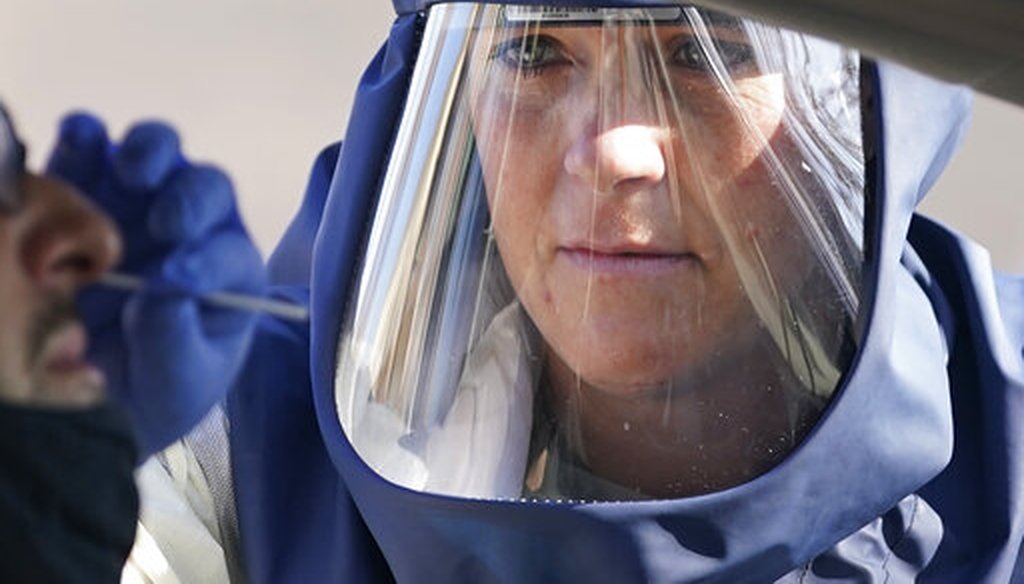Stand up for the facts!
Our only agenda is to publish the truth so you can be an informed participant in democracy.
We need your help.
I would like to contribute

Public health nurse Lee Cherie Booth performs a coronavirus test outside the Salt Lake County Health Department in Utah on Nov. 5, 2020. (AP)
If Your Time is short
• As the votes were being counted, coronavirus cases, hospitalizations, test positivity and deaths have all been rising.
• That’s worrisome news as the nation heads into a winter where more people will be spending more time indoors.
While everyone was watching the presidential returns roll in, the coronavirus pandemic in the United States worsened.
After a summer that saw a declining number of new cases, hospitalizations and deaths, these statistics have shot upward since the start of October. The timing is especially bad, with the transition to winter months keeping people indoors, where the infection risk is greater.
The data trends "together tell a worrying story," said Brooke Nichols, an infectious disease mathematical modeler at the Boston University School of Public Health. "So many of the relationships between cases and deaths have been muddled by shifting testing strategies, but the trends are worrisome nonetheless."
Nichols said that Europe now has hospitalizations where they were at during their peak in March. "That is a foreshadowing of what’s to come in the U.S. if we don’t act soon," she said.
Here’s a visual recap of where the pandemic stands, measured by four key metrics.
The seven-day rolling average of new cases has continued to reach new heights on a daily basis.
The number of new cases per day shot up from 42,000 in early October to almost 93,000 by early November. That’s well past the high during the previous peak, which maxed out at around 67,000 new daily cases one week into November.
More people with COVID-19 are ending up in the hospital.
The number of new daily hospitalizations has been rising since early October.
The percentage of positive tests for COVID-19 is also increasing. A high or rising positivity rate is concerning because it indicates wide community spread.
After falling from mid-July to late September, test positivity has been rising steadily. Currently, the national rate is north of 7%, which is almost as high as it was during the mid-July peak.
Test positivity rates were higher than that in March, April and early May. However, that was before testing had become widespread; it was generally reserved for people who suspected they were sick, producing higher positivity rates.
A decrease in deaths was one of the rare hopeful signs during the pandemic, stemming at least in part from doctors learning how to treat COVID-19 more effectively. After peaking in early August above 1,100, the number of deaths per day declined to fewer than 700 by mid-October.
Since then, however, daily coronavirus deaths have made their first sustained increase since the summer. Daily deaths now stand at about 922 a day, with no sign of slowing.
Our Sources
COVID Tracking Project, data page, accessed Nov. 6, 2020
Email interview with Brooke Nichols, infectious disease mathematical modeler at the Boston University School of Public Health, Nov. 6, 2020










































